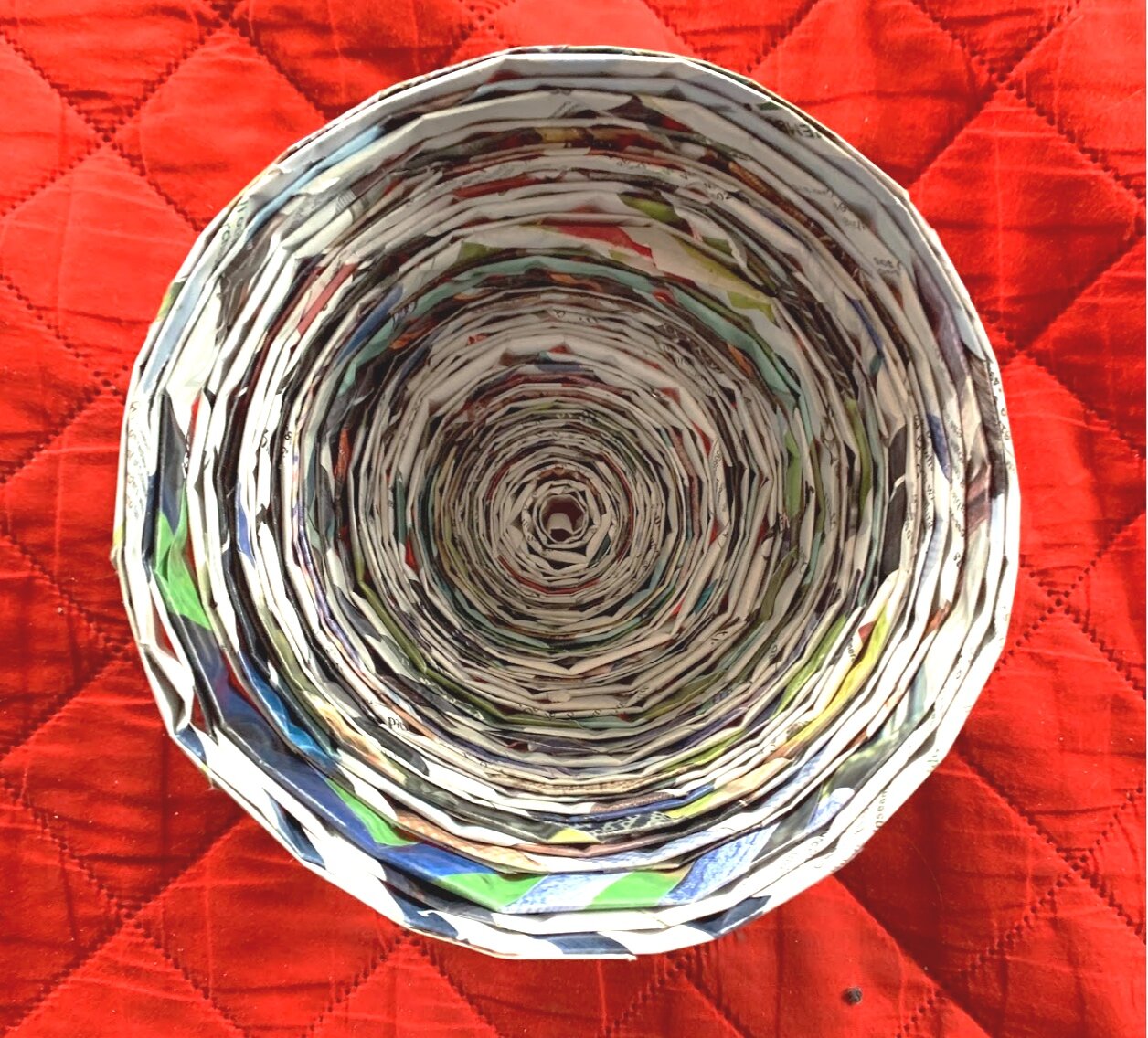Pottery 1 Distance Learning
Student work- paper coil bowl.
Paper Coil Bowls
Students were in the middle of a coil pot project when we suddenly left school. While this is not the same as working in clay I found that it shares some of the skills needed to make a coil pot in clay, but also has some elements in common with making pinch pots.
Click here to watch the instructional videos for this project.
Student Majolica Drawing
Majolica Drawings
In the classroom students had already used slip, regular glaze, and underglaze on their work. We were getting ready to try out majolica glaze on a piece. Instead here are their lovely majolica drawings/paintings.
Click here to watch the video that students viewed to learn about Majolica.
Student CAD designed pottery
Computer Aided Design (CAD)- How to make pottery with no clay!
Students have computers but no clay. Even if they had clay we wouldn’t be able to fire anything. Instead we dipped our toes into a basic CAD program and used it to design forms that students may or may not have attempted in clay with their beginner abilities. We looked at how artist, Brooks Oliver, uses CAD to make forms that would be difficult to make using other methods, then 3-D prints them and makes molds. His end product is a cast ceramic form.
Click here to see the video introduction to the lesson and the “how to” instructions for Leopoly.
Student created pattern
Pattern!
Students first created several designs that they felt would make interesting clay stamps, (which we would have made had we returned to the classroom). Then they arranged them in different configurations to see a variety of the potential patterns that are possible from one design.
Click here to see the video into of Part 1 of this assignment
Click here to see the instructional video “Part 2 Creating Pattern”
Student Teapot Design
Teapot History- Teapot Design
As a final project I often have students design and make a teapot. It incorporates many of the techniques they have learned into one project and also requires them to carefully consider the placement and proportions of each part for a well functioning teapot. With no access to clay we focused on the design alone and delved a bit deeper into the history of teapots. They watched the linked video through EdPuzzle and had reflections questions through that platform.




